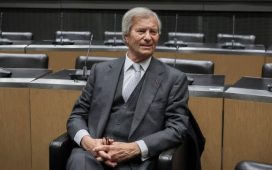The next stage of Twitter’s creator monetization push is coming, though there are some pretty significant considerations to factor into the latest revenue share element outlined by Twitter chief Elon Musk.
In a few weeks, X/Twitter will start paying creators for ads served in their replies. First block payment totals $5M.
Note, the creator must be verified and only ads served to verified users count.
— Elon Musk (@elonmusk) June 9, 2023
As explained by Musk, very soon, Twitter will begin sharing revenue with creators for ads shown in their tweet replies. Which adds another pathway for people to make money from their Twitter presence, though the actual detail in this case is important.
First off, as Musk notes, only Twitter Blue subscribers (or those gifted verification) will be eligible for the program. That’s pretty much in line with Twitter’s broader verification strategy – though the actual ‘verification’ elements still remain questionable (you need a phone number and money, that’s it).
But more importantly, only ads served within the replies of verified users will count towards this new revenue pool to be shared with creators.
Hang on, you may be thinking, didn’t Twitter halve ad exposure for Twitter Blue subscribers?
Yes, but not in a way that will affect this offering.
A key concern with the implementation of Twitter Blue has been Musk’s commitment to halving ad exposure for paying subscribers, which could actually have a big impact on Twitter’s bottom line. The average revenue per Twitter user in the US is (or was) $12 per quarter, and with the majority of that income being as a result of ad exposure. So theoretically, would mean that, in cutting ad exposure by half, Twitter Blue subscribers would end up bringing in $6 per user/per quarter instead from ad exposure alone.
Twitter has watered this down since Musk’s original announcement. Back in April, Twitter announced that Blue subscribers would now see ‘50% fewer ads in the For You and Following timelines’, but the same amount in all other elements. That’s lessened Twitter’s exposure to revenue loss as a result, while it also obviously aligns with this new revenue share element.
Essentially, the Twitter Blue ad reduction doesn’t relate to this update, as the amount of ads shown in replies remains unchanged, but Twitter did have to do some re-jigging to separate these elements.
The next part, then, is potential ad exposure, and what sort of money Twitter creators can expect to see as a result of this new initiative. And it’s likely not very much.
Based on current estimates (reduced ad exposure plus monthly payments), Twitter’s currently bringing in around $30 per Twitter Blue user, per quarter.
Twitter Blue currently has around 700,000 subscribers, which, based on these figures, means that Twitter Blue would be bringing in around $21m per quarter for Twitter. The majority of ad exposure comes in the main feed, not replies, so breaking it down, you can see, maybe, where Elon’s $5m block payment comes from, as a fraction of the overall intake from Twitter Blue users.
The problem, then, is dilution. $5m divided by 700,000 equates to around $7.14 per user, so if every Twitter Blue subscriber was posting content that generated an equal amount of ads in their replies, they’d end up getting a tiny payment from this element every three months ($2.38 per month for reference).
Now, that’s not how it’s going to work. Some users will earn a lot more, based on the amount of replies they see, thereby giving Twitter more capacity to display ads in-stream, which will give them a bigger revenue share. But basically, the payments are not going to be massive – you’ll be lucky to generate enough to cover the costs of your Twitter Blue monthly subscription through this program alone.
Which, of course, is still better than the nothing you’re getting back right now, but it’s not exactly on par with YouTube or Instagram, in terms of direct income based on your content in the app.
(For reference, YouTube pays, on average, around $5k per million views on a clip.)
But this is part of a bigger monetization push from Twitter, not the only element, so it’s just another step in its broader revenue share plans.
Though a potentially bigger concern with this initiative is the incentive system that it creates, with the new program effectively pushing users to post tweets that are going to generate a lot of response.
What type of content generates the most replies? Posts that spark an emotional reaction are going to drive more engagement, and the emotions that are most likely to trigger comments, specifically, are anger, happiness, and fear.
As per a study of 65k online posts, published by Harvard Business Review:
“Articles with a large number of comments were found to evoke high-arousal emotions, such as anger and happiness, paired with low-dominance emotions where people felt less in control, such as fear. On the other hand, social sharing was very connected to feelings of high dominance, where the reader feels in control, such as inspiration or admiration. Emotional valence was less-connected to virality, with the viral stories having both negative and positive valences. However, the researchers did find that negative emotions contributed to higher virality.”
In other words, if you want to incentivize more positive engagement, sharing is likely a better focus, but if you want to trigger more arguments, posting anger-inducing content is the way to go.
That explains why the media landscape has become so divisive, because online algorithms incentivize such – because more engagement equals more time spent, which is better for ad exposure, and thus, their bottom line. Facebook’s News Feed algorithm has arguably caused huge damage in this regard, which is why Meta’s now trying to re-align user habits away from argumentative content. But Twitter’s new revenue incentive program, based on replies, could actually be pushing things the other way, and see more angry provocation in tweets as a result.
That doesn’t seem like it aligns with Elon’s mission to focus on ‘unregretted user minutes’ in the app – but then again, Elon himself is apparently a fan of argument and challenge in the app, so in his view, maybe this is a better approach.
Either way, the process is unlikely to generate a heap of additional income for users, and could incentivize more argumentative takes.
Again, it is just another step in the broader creator monetization push at the app, and each element will add up, providing more means for creators to make money in the app. But I’m not sure that this is a great addition at this stage.











